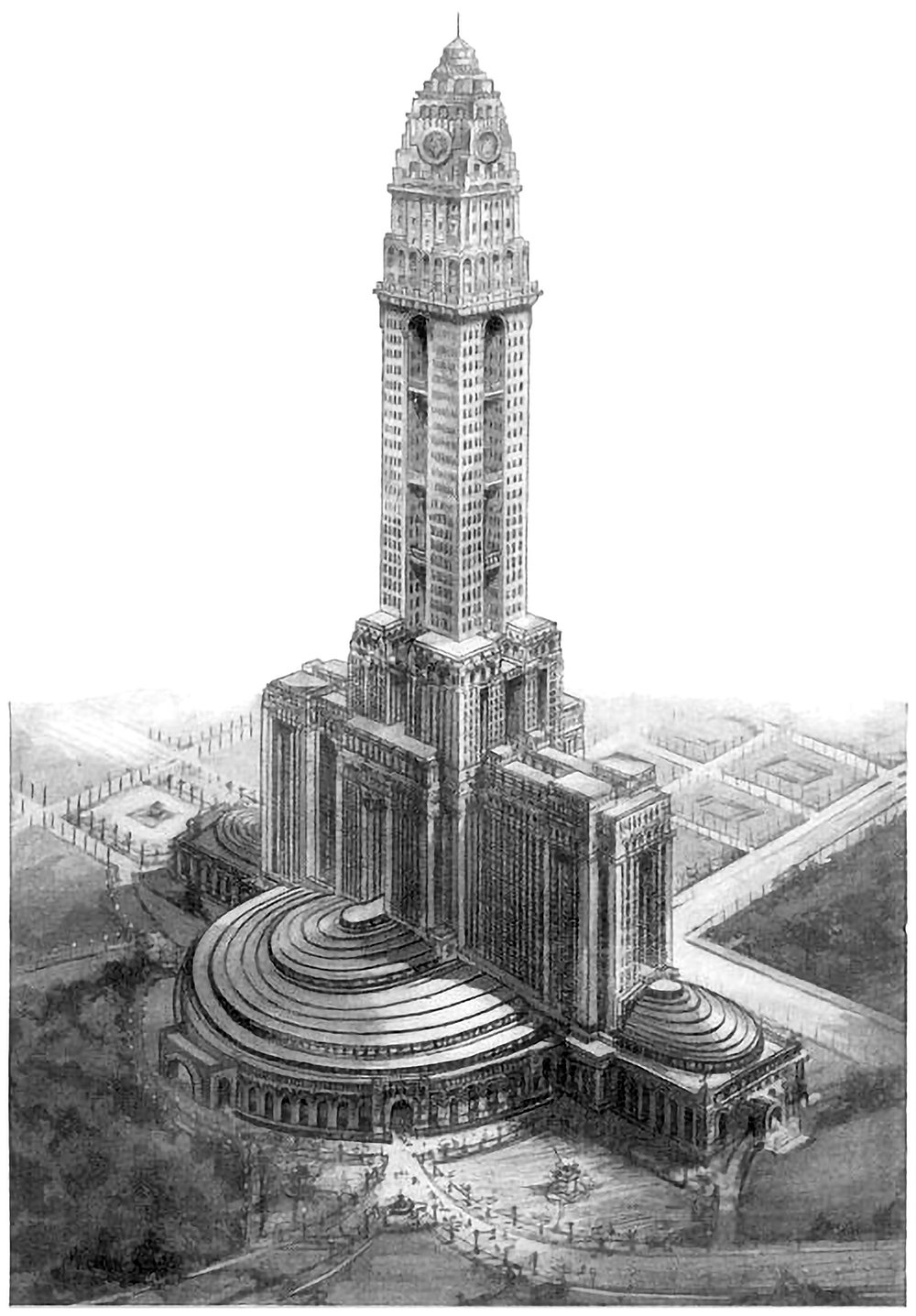The Mole Littoria Project
Perspective illustration of the Mole Littoria Project, which was a proposal for the tallest building in Europe for Rome. It was planned by Benito Mussolini and designed by Italian architect Mario Palanti.
Constructing the world’s tallest building is an act of politics just as much as an act of engineering. It’s a statement of accomplishment and power by all those involved. Paul Goldberger once wrote that you don’t build [the world’s tallest] skyscraper to house people, or to give tourists a view, or even, necessarily, to make a profit. You do it to make sure the world knows who you are.[1] Pictured above is one example of this. It’s a 1924 proposal for the world’s tallest building, to be built in Rome. It was designed by Mario Palanti, an Italian architect who made his name in South America, and he proposed his design to Benito Mussolini, who enthusiastically approved the project.
Mussolini most likely latched onto the project because he had recently come to power, and he needed a statement to establish his leadership on the world’s stage. Constructing the world’s tallest building would achieve this aim in three ways. First, a building of this size would require vast amounts of coordination and cooperation. If he could pull it off, it would be testament to his strengths as a leader. Second, a building of this size would require massive amounts of capital. If completed, the project would project Italy’s wealth and power on a global scale. Third, a building of this height would instill pride in the Italian people, both in their country and in their leadership. In a way, the building would be a physical manifestation of Mussolini’s ability to effectively rule.
Elevation of the Mole Littoria Project, which was a proposal for the tallest building in Europe for Rome.
Mole Littoria was a massive project, which included a monumental base and a supertall tower. The original design was 330 meters (1,080 feet) tall, and it would house myriad programs inside its walls. At the base was a large sports complex, along with a series of lecture halls, meeting rooms, a hotel, and library. Above this rose the tower, which would house various offices, including Italy’s new parliament and Mussolini’s office. It’s an eclectic mixture of programs, no doubt made so diverse because of the sheer size of the structure.
Floor plan of the Mole Littoria Project, which was a proposal for the tallest building in Europe for Rome.
Projects like this are fascinating because of the hubris involved. Rome is an iconic city filled with a rich history. This history would no doubt have been damaged by a project of this size, not only for its height but the land required to build it. A major swath of the existing city would need to be razed in order to begin construction, and the massive tower would be wildly out-of-context within the surrounding historical fabric. For these reasons, it’s a good thing this never got built, but the fact remains that the political rationale behind it is sound. Moussolini wanted the world to know who his new Italy was, and the world’s tallest skyscraper was one very expensive way to achieve it.
Check out other posts about unbuilt architecture here.
[1] : Goldberger, Paul. "Castles in the Air." The New Yorker, February 08, 2010.



